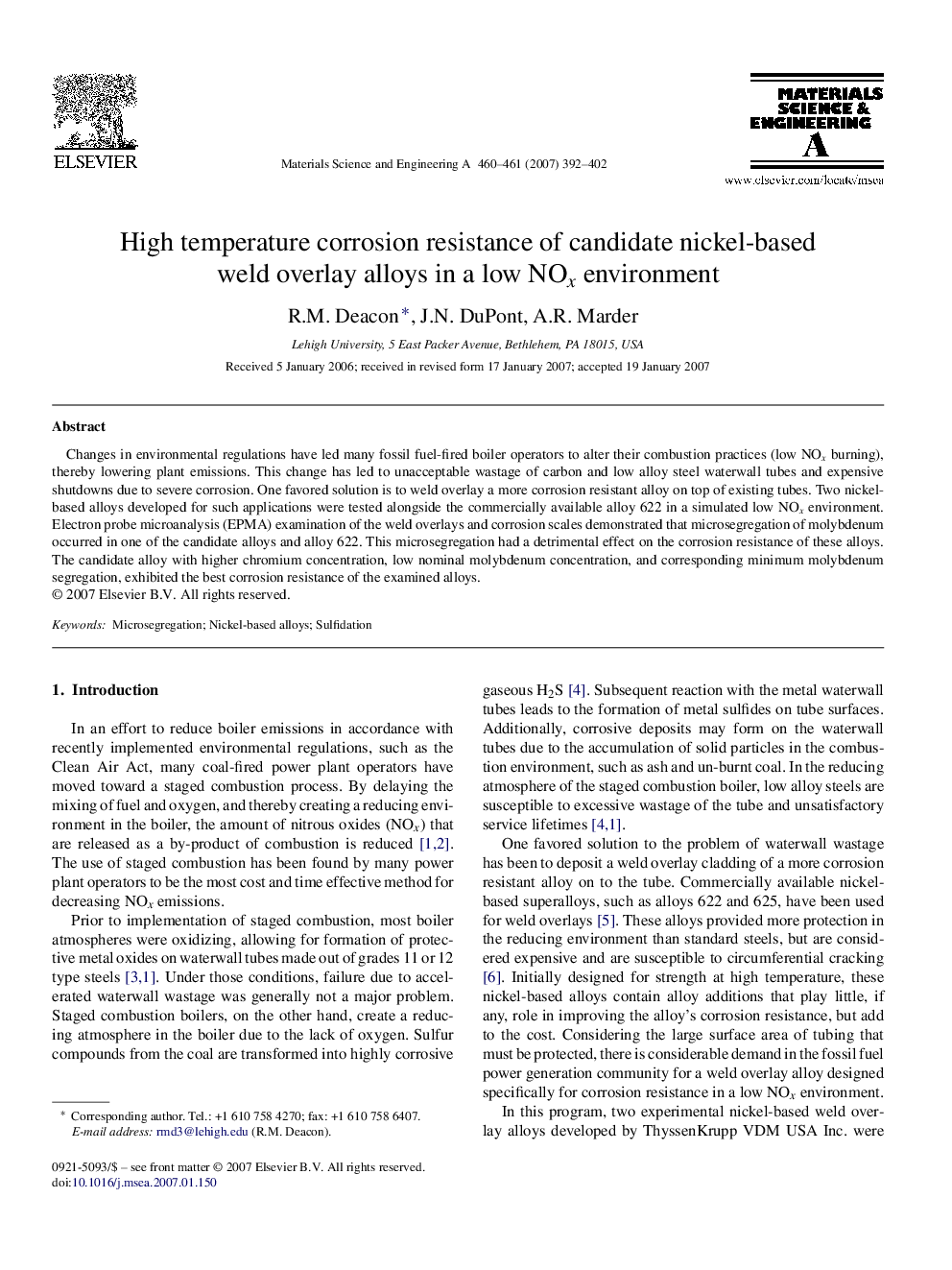| Article ID | Journal | Published Year | Pages | File Type |
|---|---|---|---|---|
| 1583590 | Materials Science and Engineering: A | 2007 | 11 Pages |
Changes in environmental regulations have led many fossil fuel-fired boiler operators to alter their combustion practices (low NOx burning), thereby lowering plant emissions. This change has led to unacceptable wastage of carbon and low alloy steel waterwall tubes and expensive shutdowns due to severe corrosion. One favored solution is to weld overlay a more corrosion resistant alloy on top of existing tubes. Two nickel-based alloys developed for such applications were tested alongside the commercially available alloy 622 in a simulated low NOx environment. Electron probe microanalysis (EPMA) examination of the weld overlays and corrosion scales demonstrated that microsegregation of molybdenum occurred in one of the candidate alloys and alloy 622. This microsegregation had a detrimental effect on the corrosion resistance of these alloys. The candidate alloy with higher chromium concentration, low nominal molybdenum concentration, and corresponding minimum molybdenum segregation, exhibited the best corrosion resistance of the examined alloys.
